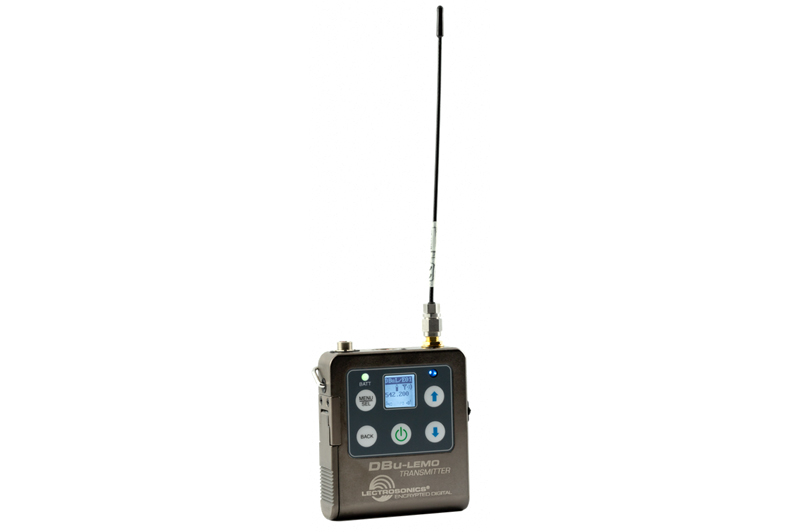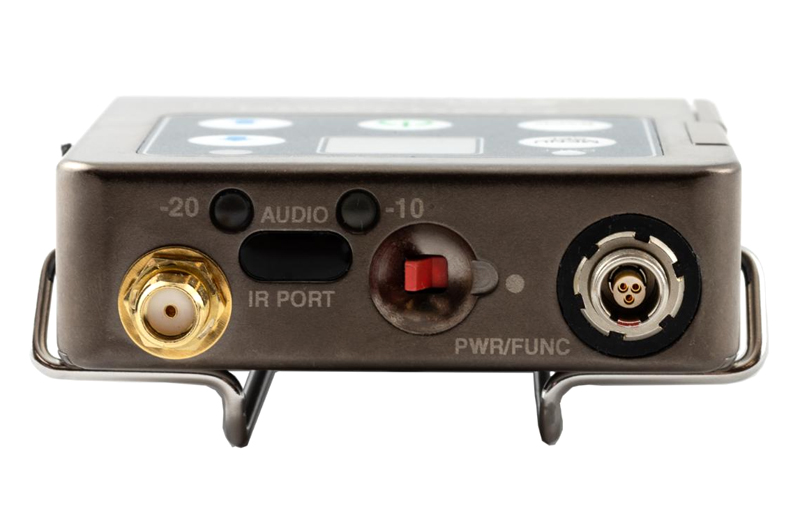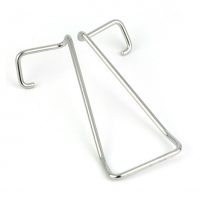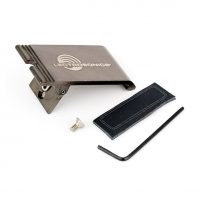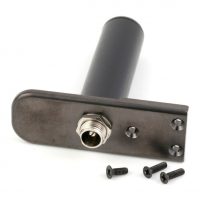- No products in the cart.
Lectrosonics DBu-Lemo Belt-Pack Transmitter
1,915.00 USD CAD
Digital Belt Pack Transmitter with Lemo input.
Unavailable for shipping outside of The United States and Canada.
SKU: LEC.DBULEMO
Categories: Lectrosonics, Transmitters, Wireless, Wireless Systems
Tags: D², Lectrosonics
Description
- LEMO connector for small microphones
- Tunes across entire UHF frequency range
- 256-bit encryption – AES 256-CTR
- Selectable RF power at 25 and 50 mW
- USB port for firmware updates
- Wide range input gain adjustment
- DSP-controlled input limiter
- Two AA battery power
- Solid machined aluminum housing
The DBu-LEMO transmitter is a second generation design with specially developed, highly efficient digital circuitry for extended operating time on two AA batteries. The transmitter can tune in coarse or fine steps across the UHF television band from 470.100 to 607.950 MHz (E01: 470.100 – 614.375 MHz), with a selectable out-put power of 25 or 50 mW. The pure digital architecture enables AES 256-CTR encryption for high level security applications.
Studio quality audio performance is assured by high quality components in the preamp, wide range input gain adjustment and DSP-controlled limiting. Input connec-tions and settings are included for any lavaliere micro-phone, dynamic microphones and line level inputs. Input gain is adjustable over a 44 dB range in 1 dB steps to allow an exact match to the input signal level, maximiz-ing the dynamic range and signal to noise ratio.
The top panel contains the antenna jack, audio input level LEDs, programmable function switch and LEMO audio input jack. The LEDs provide red/green indications of the audio level from -20 dB to the onset of limiting to enable accurate input gain adjustment. The programma-ble switch can be configured as a mute switch, a power on/off switch, or be bypassed.
The housing is constructed of solid machined aluminum for lasting ruggedness. The exterior is finished with an ultra hard, black electroless nickel finish.
The transmitter is supplied with a stainless, spring wire belt clip that is secure, but easily detached and re-at-tached without tools. A spring-loaded belt clip is available as an option. The battery door is machined aluminum, hinged to the housing to prevent it being lost. The battery door latches securely to prevent being opened inadver-tently, and will not pop open even if the unit is dropped.
Firmware updates are made via the USB port on the side panel of the housing. The procedure is very simple using a menu item on the transmitter and a standard micro USB cable.
Setup and adjustment is enabled through a backlit LCD, membrane switches and an intuitive menu structure. Input gain is adjustable over a wide range in 1 dB steps to optimize modulation and limiting for maximum signal to noise ratio and mimimum distortion.
Specifications
| Operating Frequencies: | 470.100 – 607.950 MHz |
|---|---|
| Frequency Selection Steps: | 25 kHz |
| RF Power output: | Selectable; 25 or 50 mW |
| Frequency Stability: | ± 0.002% |
| Digital Modulation: | 8PSK |
| Equivalent input noise: | –128 dBV |
| Input level: |
|
| Input impedance: |
Mic: 300 Ohm Line: 2k Ohm |
| Input limiter: | Dual envelope type; 30 dB range |
| Gain control range: | 44 dB in 1 dB steps; digital control |
| Modulation indicators: |
|
| Controls: |
|
| Audio Input Jack: | Switchcraft 5-pin locking (TA5F) |
| Antenna: | Galvanized steel, flexible wire |
| Battery: | Two AA Duracell Quantum recommended |
| Battery Life: | 5 hours; Duracell Quantum alkaline |
| Weight: | 6.24 ounces (177 grams), including two AA batteries and wire belt clip |
| Dimensions: | 3.2 x 2.5 x .74 in. (86 x 62 x 19 mm) |
| Emission Designator: | 200KG1E |
Related Products
-
Lectrosonics 26895 Belt Clip
19.00 USD CADReplacement wire belt clip for LT, LR & DB units.Unavailable for shipping outside of The United States and Canada.
-
Lectrosonics BCSLEBN
55.00 USD CADSpring loaded belt clip for LT TransmitterUnavailable for shipping outside of The United States and Canada.
-
Lectrosonics LTBATELIM Battery Eliminator
175.00 USD CADThis battery eliminator replaces the batteries and door on the LT transmitter, allowing the unit to be powered from an external DC source. The battery eliminator is supplied in a kit including mounting screws.Unavailable for shipping outside of The United States and Canada.
Product Categories
- Bags & Harnesses
- Bargain Bin
- Books
- Boom Poles
- Cables & Adapters
- Camera Interfaces
- Case
- Cases
- Cases, Bags & Harnesses
- Clearance
- Communications
- Connectors
- Deal Center
- DSLR Audio Solutions
- Expendables
- Featured
- Headphones
- Holiday Clearance
- In-Ear-Monitors
- Interfaces
- Microphones & Accessories
- Mixers
- Motorola
- NAGRA
- Podcast
- Power Solutions
- PPE
- Press Boxes
- Pro Audio Converters
- Pro Video
- Recorders
- Slates & Timecode
- Sound Carts
- Straps & Cases
- Trew Merchandise
- Uncategorized
- Used
- Walkie-Talkies
- Wireless


 US
US  Canada
Canada 